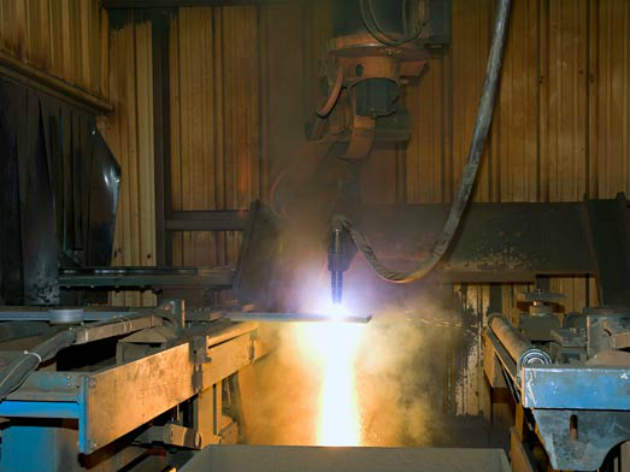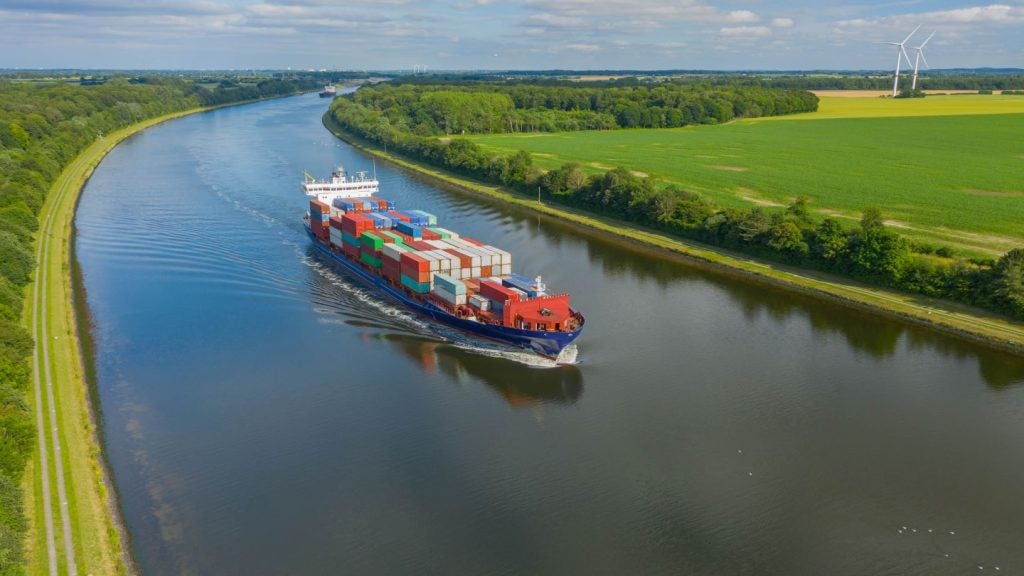
Finally, it would appear, the US shipbuilding sector is ready to embrace robotic welding technology.
Such a sea change would be significant for American shipyards, which are generally deemed to have fallen behind their Asian counterparts when it comes to the use of robotic welding. Europe, too, despite its longstanding shipbuilding traditions, has been left in the dust by technological advances in the Far East.
It was this realisation that prompted the US National Shipbuilding Research Program (NSRP) into action. Since June 2015, it has been engaged in the Computer Aided Robotics Welding (CAR-W) project, together with a number of US shipyards, with the official objective of “closing the robotic welding technology gap between the US defence shipbuilding industry and the foreign commercial shipbuilding industry”.
The brief, as featured on the NSRP website, is focused on “helping to resolve a critical bottleneck to the application of robotic welding technologies in lower volume – high mix shipbuilding applications… automated robotic path and process solution generation for welding.”
The project has received substantial investment – both in a financial and collaborative sense. The NSRP has sunk $3.3m into the programme, with a further $2.6m coming from the industry purse. Leading the way is Louisiana-based Bollinger Shipyards and Wolf Robotics, along with several other stakeholders.
Leading the charge: collaboration between Bollinger Shipyards and Wolf Robotics
With the project on its final stretch – completion is set for June – the project partners have covered much ground, reveals Bollinger vice president of quality management system Dennis Fanguy.
How well do you really know your competitors?
Access the most comprehensive Company Profiles on the market, powered by GlobalData. Save hours of research. Gain competitive edge.

Thank you!
Your download email will arrive shortly
Not ready to buy yet? Download a free sample
We are confident about the unique quality of our Company Profiles. However, we want you to make the most beneficial decision for your business, so we offer a free sample that you can download by submitting the below form
By GlobalData“The collaboration between all team members in this project continues to be very strong,” he says. “This was laid out at the start of the project with a five-day workshop held to establish group alignment, form appropriate work groups and team leads associated with critical project tasks.”
This initial meeting allowed stakeholders, including the US Navy, to brainstorm on preliminary CAR-W core ‘ingredients’. They agreed on an automated path planning algorithm development, focused on robot reachability, collision avoidance and path optimisation. The project is also centred on helping to standardise the computer aided design (CAD), creating “a prototype process map for how to implement the necessary infrastructure required to support successful implementation.”
Fort Collins, Colorado-based Wolf Robotics has been charged with the responsibility of utilising a robotic cell in its lab, as well as working on placing a common robotic cell in Bollinger Shipyards, as Mark Schaub, who heads up the group’s business and technology developments division, explains.
“Besides the management of the project, Wolf’s responsibilities were actually four-fold,” he says. “First and foremost was the development of the kinematic solutions to automatically generate collision-free, reachable robot motion to successfully generate welds. Then it was a case of developing a process database housed on the robot with the critical parameters required to generate quality welds based on specific call-outs in the generated drawings.
“We also provide tools to automatically generate and manually manipulate the sequence of welds executed by the robot. Lastly, we are responsible for integrating, testing, delivering and supporting the CAR-W robotic welding gantry system used on Bollinger’s production floor. We also trained Bollinger’s personnel through the entire planning to production floor work-flow.”
Challenges: collision avoidance and variability
The main challenges traditionally associated with robotic welding in shipbuilding include collision avoidance and variability. How have these pitfalls been bridged?
“The design of the project was based on a high level of commonality between the part families and weld types among shipyards, and it appears that there are significant technology transfer opportunities for technologies outlined in this assessment report,” says Fanguy.
“Equally important to the algorithm development in this project – centred on robot reachability, collision avoidance, and path optimisation kinematics using electronic CAD Model and Welding Process Planning Data – is the alignment of the shipbuilding industry to support the coming CAR-W capabilities from an organisational and process-work-flow standpoint.”
“Wolf Robotic’s CAR-W automated Path Planning software fills the role that CAD-CAM [computer aided manufacturing] software has done for CNC [computer numerical control] machining when integrated with ShipConstructor Software,” says Schaub.
“This significantly reduces the robot programming time by an average of 90%. Without the programming time and cost as a barrier to automation, low-volume high-mix welding applications are now viable to automate using robotics. Just like CAM software fuelled a more widespread use of CNC machining to increase productivity and reduce costs for low volume parts, Wolf’s CAR-W path planning software used on the ShipConstructor platform will do the same and increase weld quality.”
The next stage: proving ROI
The next stage, after the project’s completion, will be a demonstration at Bollinger shipyards in late June. The group will then set about evaluating return-on-investments (ROI), with a view to establishing a follow-up project in the near future to further enhance the system.
According to Fanguy, proof of ROI is the biggest hurdle still obstructing robotic welding coming into play in US shipyards.
“The ROI for robotic welding systems is difficult to demonstrate, which makes management reluctant to invest the money,” he explains.
“Most companies need to see ROI within three ships, or else they will not make an investment. Most automated robotic welding in US yards was confined to smaller, repeatable parts or long, straight weld seams.”
Then there is the size and weight of current robots to consider, as well as a lack of reliable vision systems for robot guidance. That’s not to mention the large capital expenditure required.
“There are usually not enough ships built in a specific program to justify the increased use of automated welding methods,” says Fanguy. “Opportunities for future development include robotic vision, more flexible and lighter robots, and the development of better standards and benchmarks.”
There’s still some way to go before robotic welding becomes commonplace. If and when this happens, its potential could have a lasting impact on the way ships are built for years to come.




